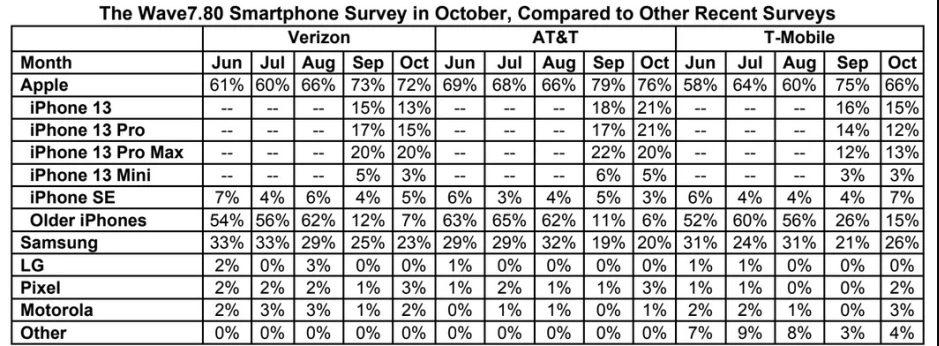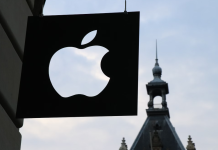According to the latest Wave7 research report, the global chip shortage is doing a number on Samsung‘s smartphone market share in the U.S. This is due to the short supply of high-end Samsung Galaxy phones, which has helped increase demand for the Apple iPhone 13 line.
The research was conducted as a survey with 40 representatives of the major carriers, namely Verizon, AT&T, and T-Mobile. This report aimed to shed light on the sales of smartphones for October by the carriers mentioned above in the United States.

According to 65% of the store representatives, the demand for the iPhone 13 series is higher in October when compared to the demand for iPhone 12 for the same month last year.
Last month, the iPhone made up 72% of Verizon’s smartphone sales, while Samsung accounted for 23%. For AT&T, this number was 76% in favor of iPhone sales, compared to 20% of the Samsung sales. T-Mobile sales also favored Apple, with 66% of iPhones sold against 26% of Samsung devices.
Availability of the iPhone 13 has improved as of November 20th, with plenty of inventory in stock for the iPhone 13 base model. The iPhone 13 Pro and iPhone 13 Pro Max shipping dates are pushed into December.
The iPhone 13 Pro Max was the top iPhone 13 model, responsible for 20% of sales at Verizon and AT&T and 13% at T-Mobile. On the other hand, Samsung Galaxy S21 Ultra was the top-selling phone for Samsung in the month of October. 62% of the carrier reps said that the S21 Ultra was among their top three sellers, while 42% stated that the Galaxy Z Flip 3 was among their top three selling models for the month. Reps say that the iPhone 13 Pro Max and larger-screened phones are doing well as they are being used for video conferences during the pandemic.
With Samsung models in short supply, T-Mobile reps stated that they are offering six OnePlus models as Android alternatives to Samsung. Google Pixel models saw their shares at Verizon and AT&T rise from 1% in September to 3% in October, the phones were released on October 28th, which was too late to impact the survey, and next month’s report will give us much more information.
RELATED:
- Samsung showcases new foldable techs & OLED innovations on a dedicated OLED microsite
- Samsung’s next Charger may fast charge them all!
- MediaTek’s VP claims the Dimensity 9000 squares up with Apple A15 Bionic in benchmark tests
- Apple patents a foldable device with a split screen; could double as a Notebook
- Apple is offering free repairs to fix audio issue on some iPhone 12 models







